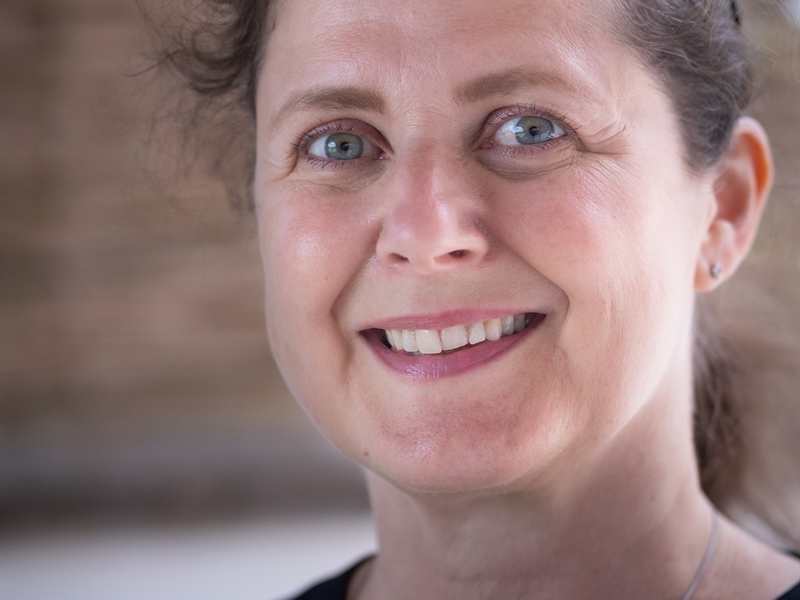At the Rare Disease Patients’ Network in Wales event in Cardiff on 18 October, Beat SCAD Trustee, Sarah Coombes attended a talk about the implementation of genomics in Wales.
Sarah and the other delegates were very keen to hear from Dr Ian Tully of the SIGNAL project (Studying the Implementation of GeNomics in wALes). This project piloted the use of diagnostic clinical exome sequencing (CES) in the NHS in Wales.
To a largely non-medical audience, Dr Tully compared the nucleus of a single cell in a human body to a library. The library bookshelves were the 23 pairs of chromosomes. An individual book was an individual gene. A ‘letter sequence’ – ie a sentence in the book – was compared to a data sequence in a gene. The SIGNAL project aimed to find data sequence errors. So, to put this all in context… finding one error in one gene was like trying to find a spelling mistake in one book of an entire library!
We were told that genes make proteins and all body functions and processes are controlled by proteins. A ‘spelling mistake’ in one gene will stop or alter a protein process. The study was looking at whether an alteration in a gene causes a disease or whether it is just part of human variation. The average person has 100,000 variations – most of which are harmless.
Dr Tully went on to explain that there are anything between 5,000 and 8,000 known rare disease. Having a rare disease is not uncommon however, individually, they are rare conditions. An astonishing 1 in 17 people in the UK has a rare disease. Three million people in total.
For many people with a rare condition, getting a diagnosis in the first place is the hardest part – with many patients experiencing a cycle of referral, testing, no diagnosis, disappointment, new referral and so on.
The SIGNAL study wanted to see what role exome sequencing could play in helping to diagnose rare disease, with the hope that transformational change would ultimately happen in NHS Wales, also with economics benefits in the long term.
The study recruited 167 patients to study – 44 family groups (child and two parents) and 29 singletons (no parents to test) with ‘unexplained delayed development’. Results from family groups are more helpful – because it is understood that changes inherited from healthy parents are not likely to cause a child’s condition so can be ruled out.
When genome testing is done, results are graded from 1 to 5. 1 = confirmed ‘benign’, 2 = likely benign, 3 = uncertain significance, 4 = likely pathogenic, 5 = definitely pathogenic. A result of 1 or 5 is the most desirable because they provide a clear answer. An answer of 2, 3 or 4 requires interpretation.
In the SIGNAL study 27% of the family groups got a diagnosis grade of 5, 4 or a ‘high’ 3 – ‘with inheritance evidence resulting in a high suspicion’. When these high grade 3s were taken out, the number of families with a grade 4 or 5 diagnosis was 16%.
“As a novice to genetics, this result was quite startling for me,” said Sarah.
As Dr Tully explained, they don’t always find the answer, even after a full sequencing has been done. But as more work of this nature is completed, doctors will get better at interpreting the results, new computer modelling will be developed. Key to future success is the need for global unified practice so that research findings can be shared and compared on a like for like basis. New discoveries are being made all the time.
More work needs to be done on discovering polygenic traits (ie conditions that are influenced by many genes) and also with the non-coding part of DNA (2% of DNA makes protein, 98% is non-coding but that does not mean it is also non-functional, but researchers still don’t know what that 98% does).
“All in all it was a fascinating insight into the role of genome sequencing to help diagnose rare diseases,” added Sarah. “I was sitting next to a lady with (in her own words) an ‘undiagnosed neurological condition’. Her health was deteriorating rapidly but no-one could tell her what condition was affecting her, so no-one could advise her on how to halt or even manage her heath. I left the talk thinking that SCAD patients are ‘fortunate’ in that it is at least possible to diagnose our condition after the event has taken place. Perhaps one day polygenic traits will be discovered to explain SCAD and allow for its early detection before a SCAD occurs? Wouldn’t that be wonderful?!”

